Screw fixation
1. General considerations
Introduction
Complete articular fractures can usually be treated with screw fixation.
If the fragments are sufficiently large, screws are inserted in an antegrade manner without perforating the articular cartilage.
Smaller fragments are fixed in a retrograde fashion with the screws inserted through the articular cartilage. Alternatively, small headless screws can be used if the fragment is sufficiently thick.
The reduction can be assisted with arthroscopy if skill and equipment are available.
In severely impacted fractures, bone graft may be necessary.
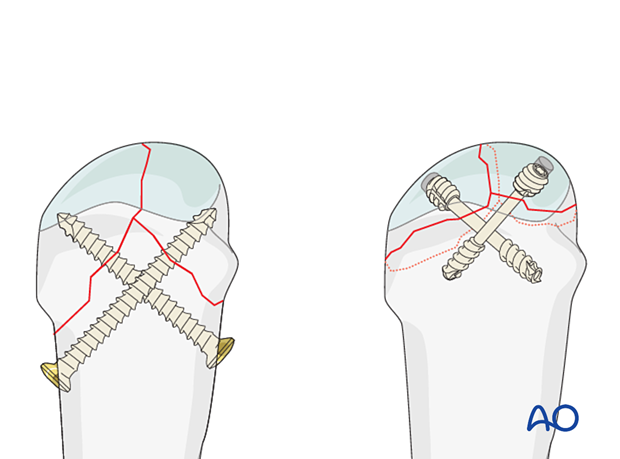
Fracture configuration
The degree of displacement and the number of fragments may be difficult to judge on standard x-rays. CT scans can be helpful in these situations.
2. Patient preparation
Place the patient supine with the arm on a radiolucent hand table.
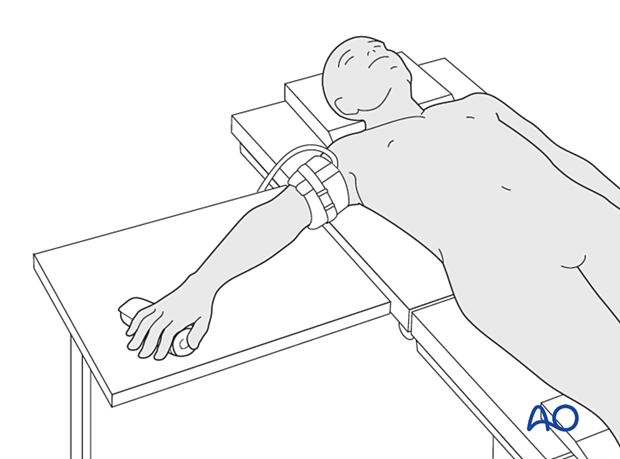
3. Approach
For this procedure, the following approach may be used:
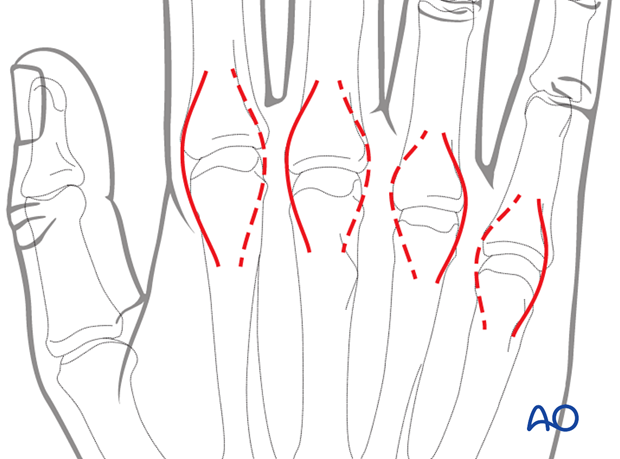
4. Reduction
Manipulate the articular fragments with a dental pick, small K-wires, or a small periosteal elevator.
Small K-wires can also be used for preliminary fixation. Depending on fracture configuration, pointed forceps may be useful for reduction.
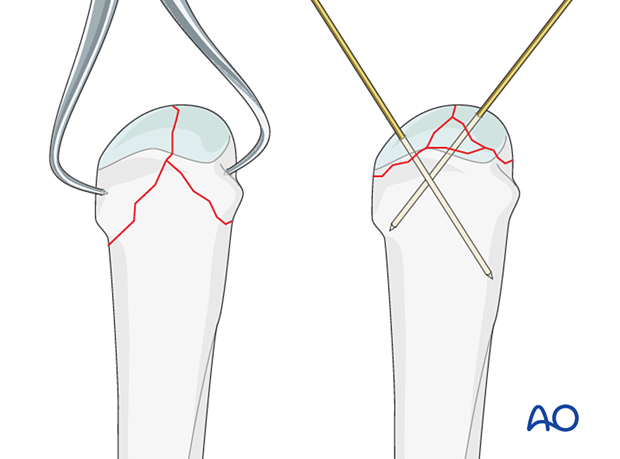
Impaction
In impacted fractures, reduce the articular surface, and fill the bony defect under the fragments with bone graft. This helps to keep the fragments in place when the screw fixation is performed.
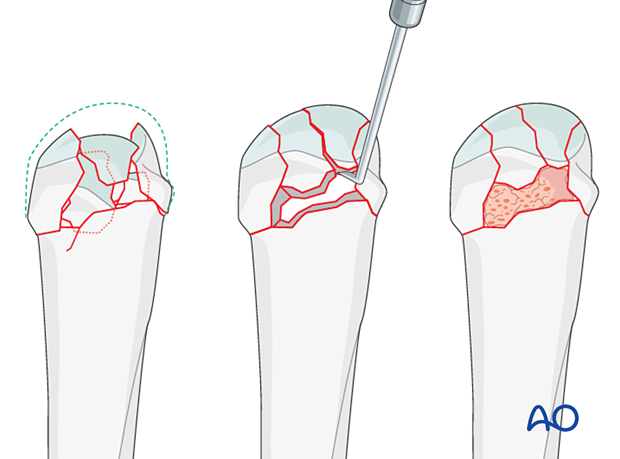
Confirming anatomical reduction
Check anatomical reduction of the joint surface under direct view or arthroscopy and image intensification.
Maximally flex the MCP joint to gain a view of the palmar aspect of the metacarpal head.
5. Checking alignment
Identifying malrotation
At this stage, it is advisable to check the alignment and rotational correction by moving the finger through a range of motion.
Rotational alignment can only be judged with flexed metacarpophalangeal (MCP) joints. The fingertips should all point to the scaphoid.
Malrotation may manifest by an overlap of the flexed finger over its neighbor. Subtle rotational malalignments can often be judged by a tilt of the leading edge of the fingernail when the fingers are viewed end-on.
If the patient is conscious and the regional anesthesia still allows active movement, the patient can be asked to extend and flex the finger.
Any malrotation is corrected by direct manipulation and later fixed. Flexing the MCP joints while preventing overlap of the fingers will reduce rotational displacement.
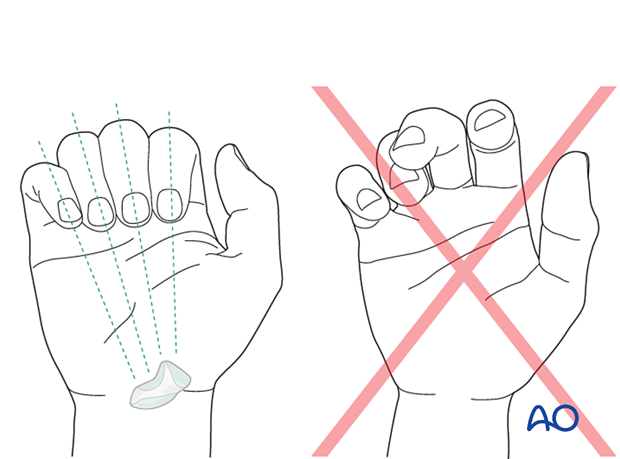
Using the tenodesis effect when under anesthesia
Under general anesthesia, the tenodesis effect is used, with the surgeon fully flexing the wrist to produce extension of the fingers and fully extending the wrist to cause flexion of the fingers.
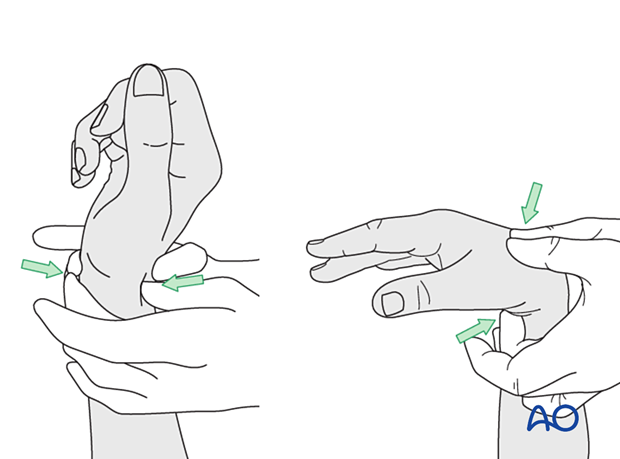
Alternatively, the surgeon can exert pressure against the muscle bellies of the proximal forearm to cause passive flexion of the fingers.
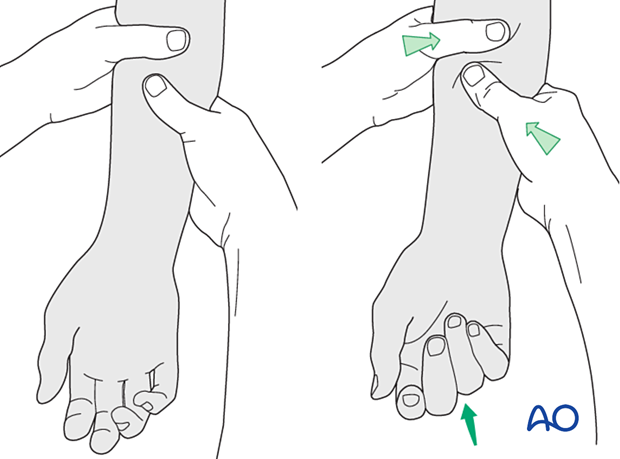
6. Antegrade screw fixation (large fragments)
Screw size selection
The exact size of the diameter of the screws used will be determined by the fragment size and the fracture configuration.
The various gliding and thread hole drill sizes for different screws are illustrated here.
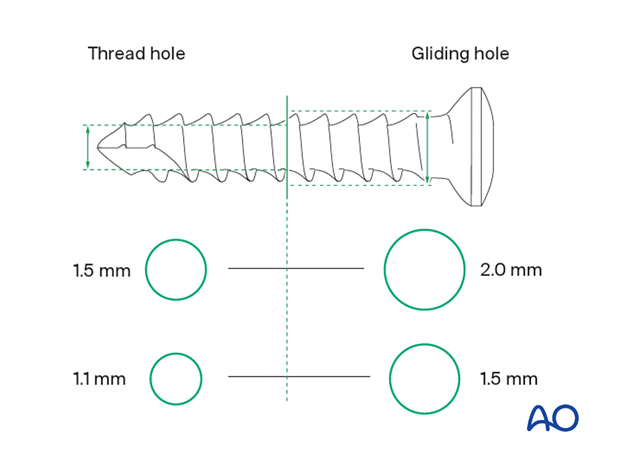
Screw insertion
If the fragments are large enough to allow sufficient purchase, antegrade screws are preferred not to penetrate the joint surface.
Drill very carefully not to perforate the articular cartilage. If necessary, drilling is performed under image intensification. Drill at low speed and without exerting pressure.
Ensure that the screws do not conflict with the collateral ligament.
As the screws do not engage the opposite cortex, they are inserted as position screws, ie, they are threaded in both fragments.
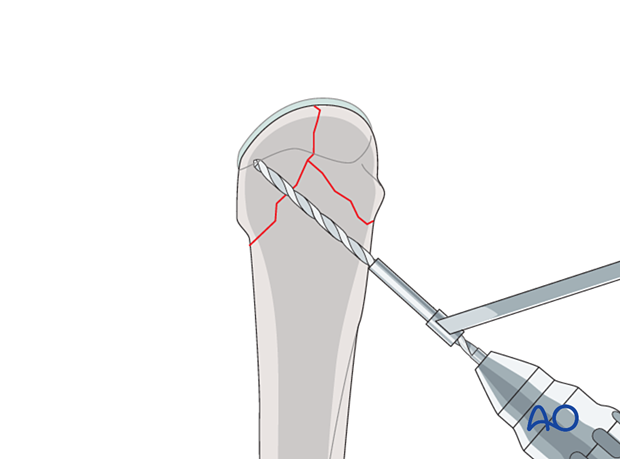
If the fragments extend to the metaphyseal region, bicortical lag screws can be used.
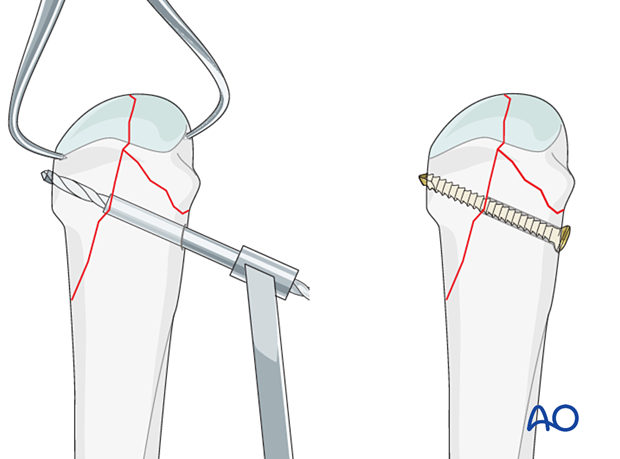
Carefully insert the screw without displacing the reduced fragments. Confirm correct screw insertion with an image intensifier.
Insert additional screws in a similar manner.
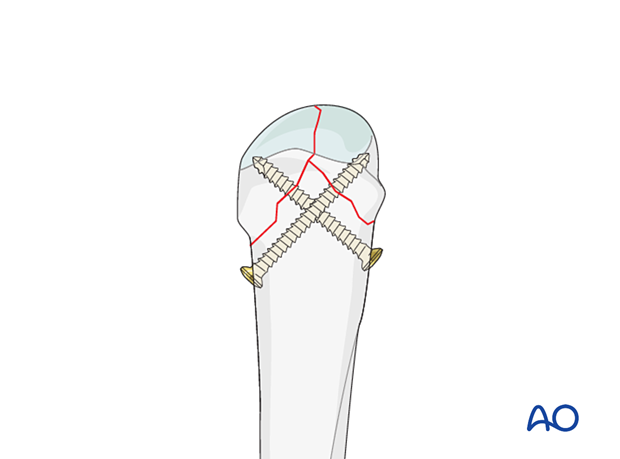
7. Retrograde screw fixation (small fragments)
Small fragments are best stabilized with retrograde screws that are inserted through the articular cartilage. Choose the smallest possible screw diameter to minimize the damage to the joint surface. The screw head must be buried underneath the cartilage.
Headless screws, if available in very small sizes, may be used if the fragment is sufficiently thick. They have the advantage deeper insertion into the fragment without protruding.
Depending on the fracture configuration and available screw lengths, the opposite cortex may be engaged. Standard screws are usually inserted as position screws.
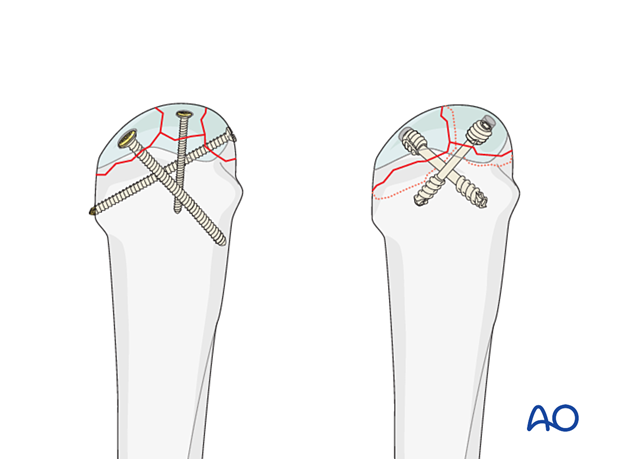
Drilling and measuring
Drill carefully not to displace the fragments.
Measure correct screw length with a depth gauge. When measuring, be careful not to displace the reduced fragments.
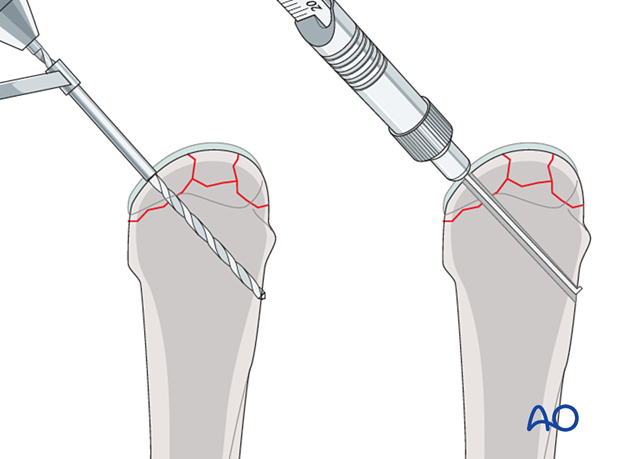
Countersinking the articular cartilage
When standard (headed) screws are used, the cartilage is countersunk to facilitate burial of the screw head. Be careful not to injure the thin subchondral cortex.

Screw insertion
Carefully insert the screw without displacing the reduced fragments. Ensure that the screw head is buried in the articular cartilage and does not protrude into the joint.
Insert additional screws using a similar technique.
Intraoperative radiologic and visual assessment of joint motion is critical to verify sufficient countersinking.
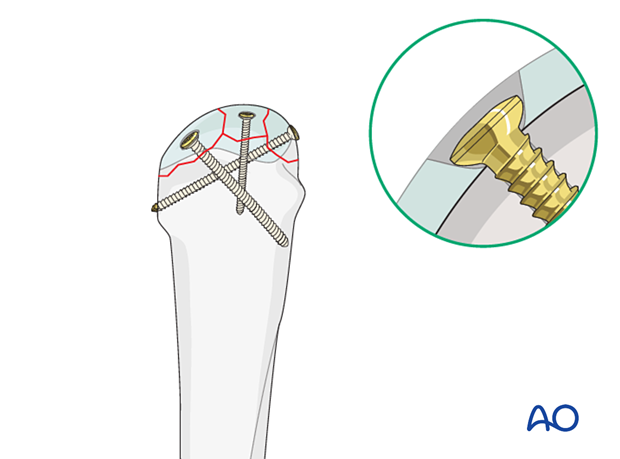
8. Final assessment
Confirm correct rotational alignment by clinical examination.
Image intensification may be used to confirm anatomical reduction and correct placement of implants in two views.
9. Aftercare
Postoperative phases
The aftercare can be divided into four phases of healing:
- Inflammatory phase (week 1–3)
- Early repair phase (week 4–6)
- Late repair and early tissue remodeling phase (week 7–12)
- Remodeling and reintegration phase (week 13 onwards)
Full details on each phase can be found here.
Postoperative treatment
If there is swelling, the hand is supported with a dorsal splint for a week. This would allow for finger movement and help with pain and edema control. The arm should be actively elevated to help reduce the swelling.
The hand should be splinted in an intrinsic plus (Edinburgh) position:
- Neutral wrist position or up to 15° extension
- Metacarpophalangeal (MCP) joint in 90° flexion
- Proximal interphalangeal (PIP) joint in extension
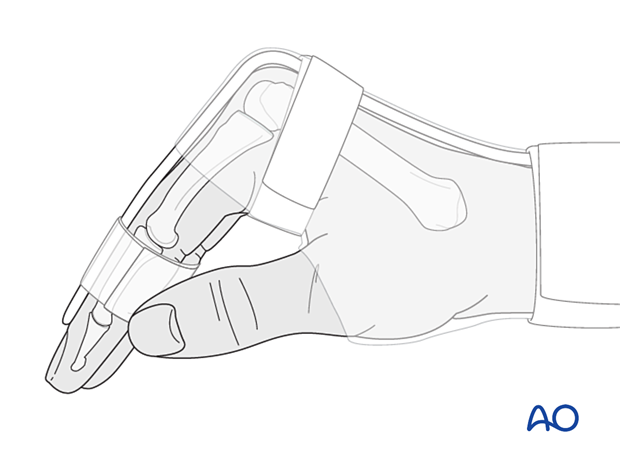
The reason for splinting the MCP joint in flexion is to maintain its collateral ligament at maximal length, avoiding scar contraction.
PIP joint extension in this position also maintains the length of the volar plate.
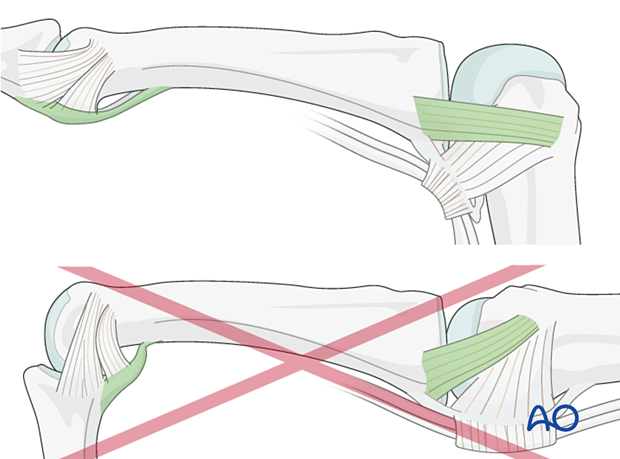
After subsided swelling, protect the digit with buddy strapping to a neighboring finger to neutralize lateral forces on the finger.
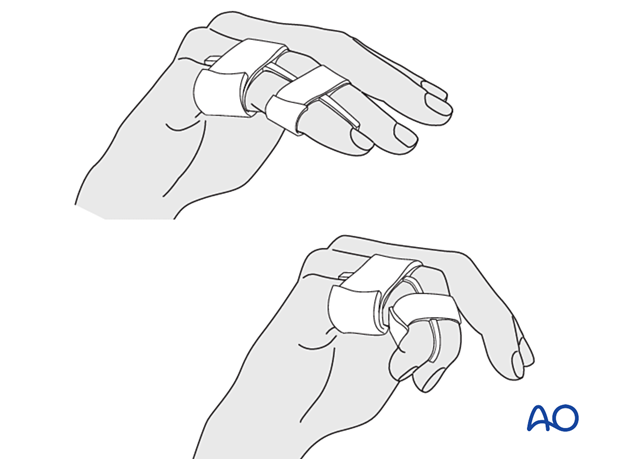
Functional exercises
To prevent joint stiffness, the patient should be instructed to begin active motion (flexion and extension) immediately after surgery.
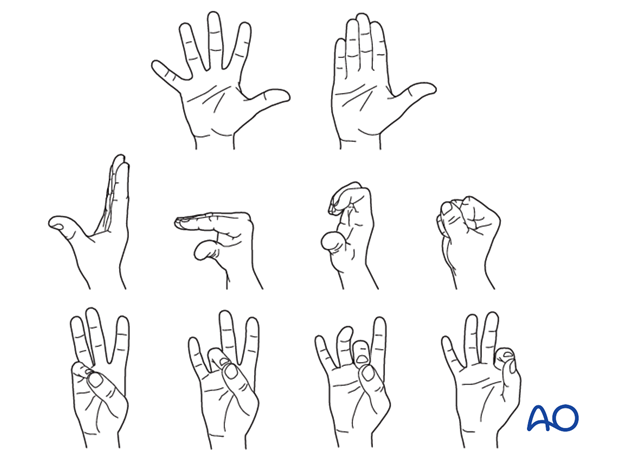
Follow-up
See the patient after 5 and 10 days of surgery.
Implant removal
The implants may need to be removed in cases of soft-tissue irritation.
In case of joint stiffness or tendon adhesion restricting finger movement, arthrolysis or tenolysis may become necessary. In these circumstances, the implants can be removed at the same time.
10. Case
These preoperative AP and oblique x-rays show a case of an oblique partial articular fracture of the 5th metacarpal head.
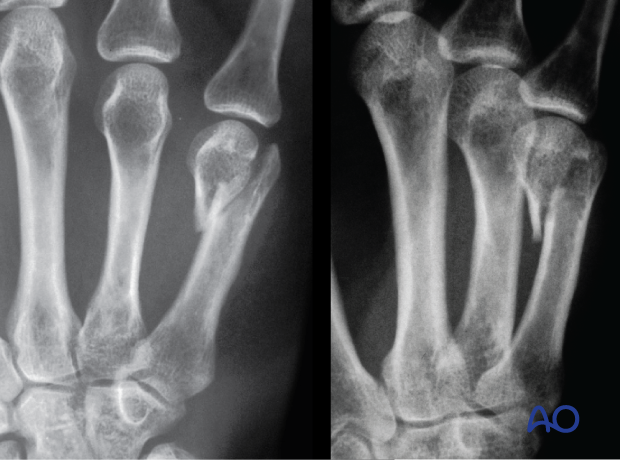
The postoperative AP x-ray shows fracture reduction and antegrade screw fixation
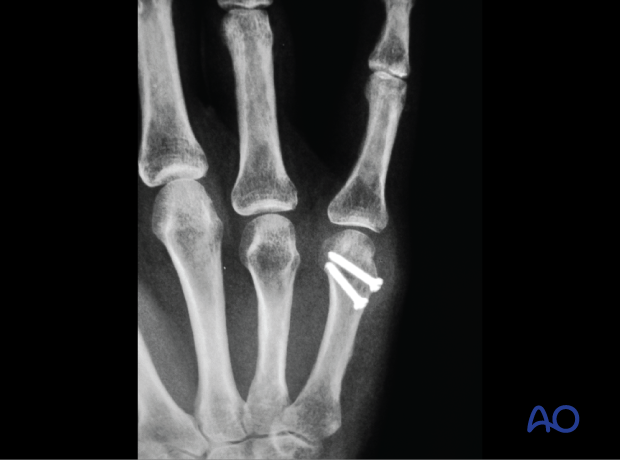
Oblique x-ray of the final construct
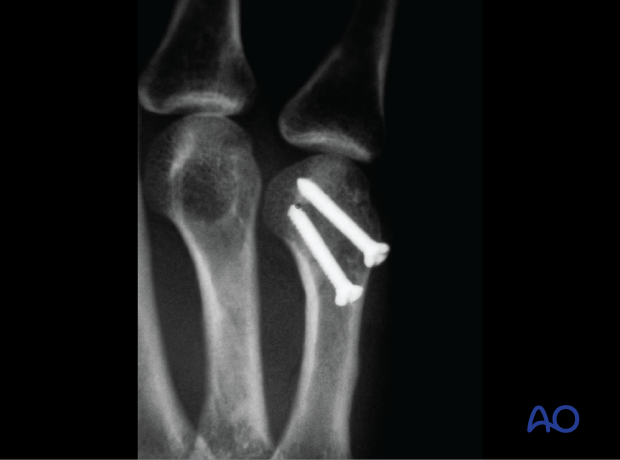
Transverse x-ray of the final construct














